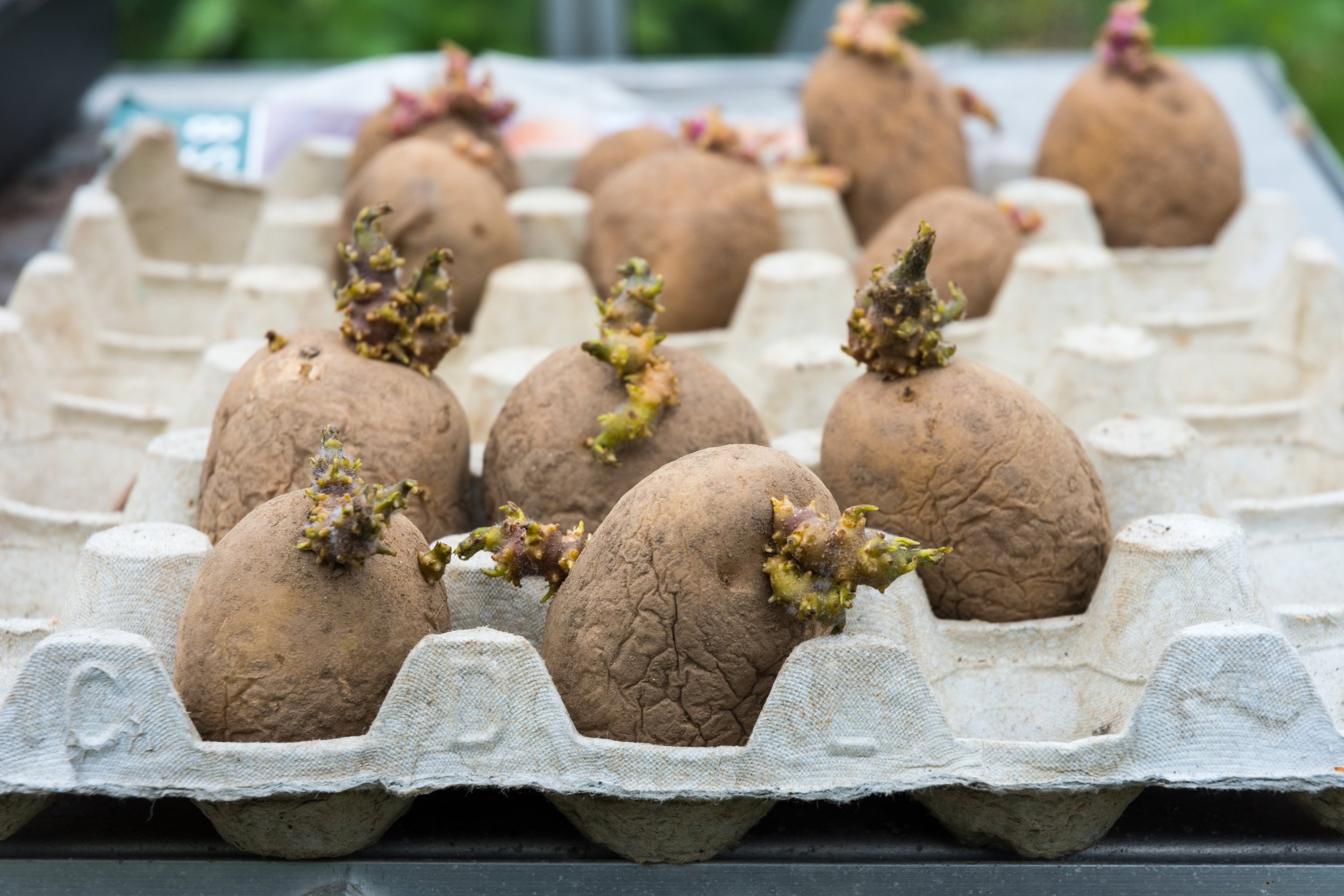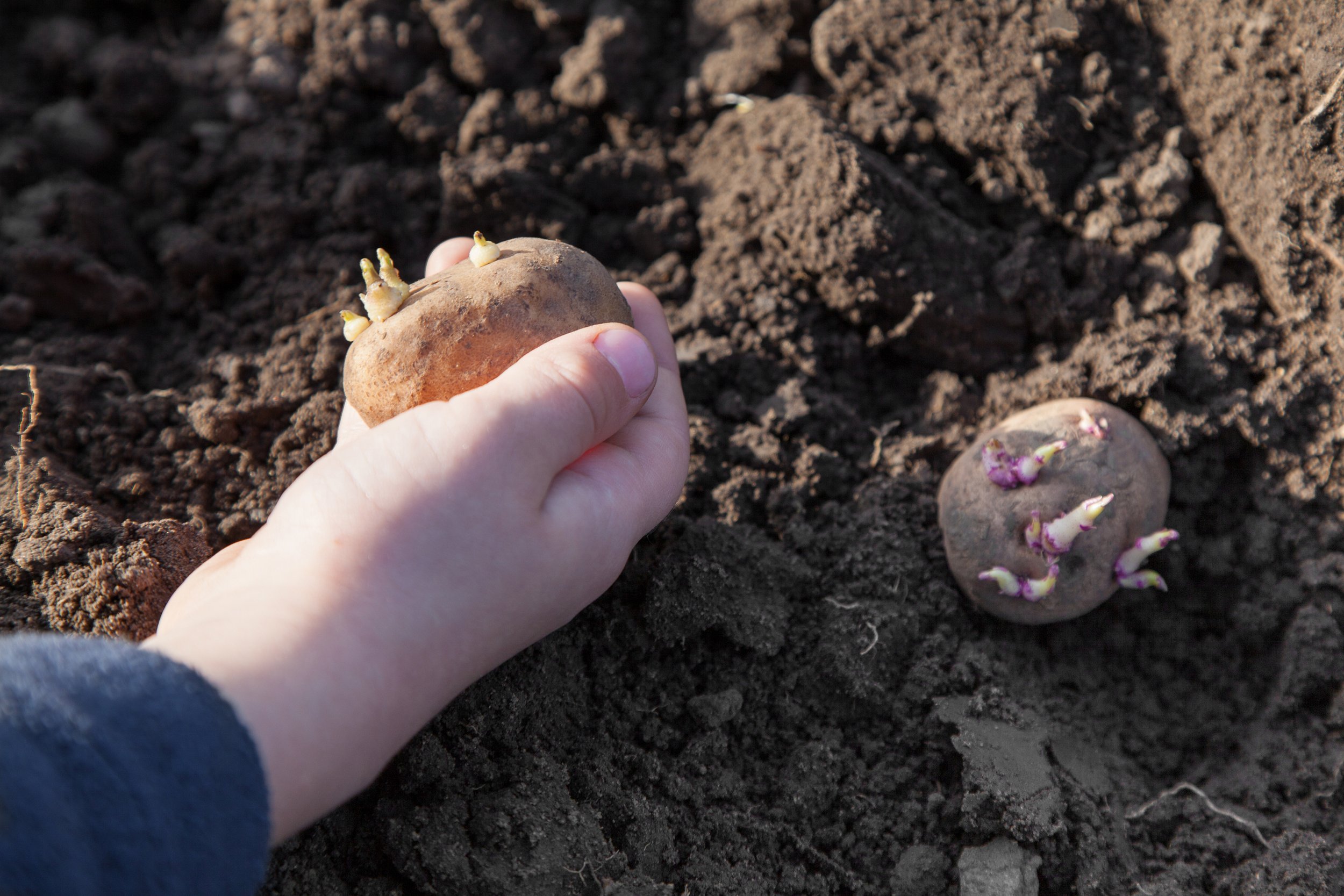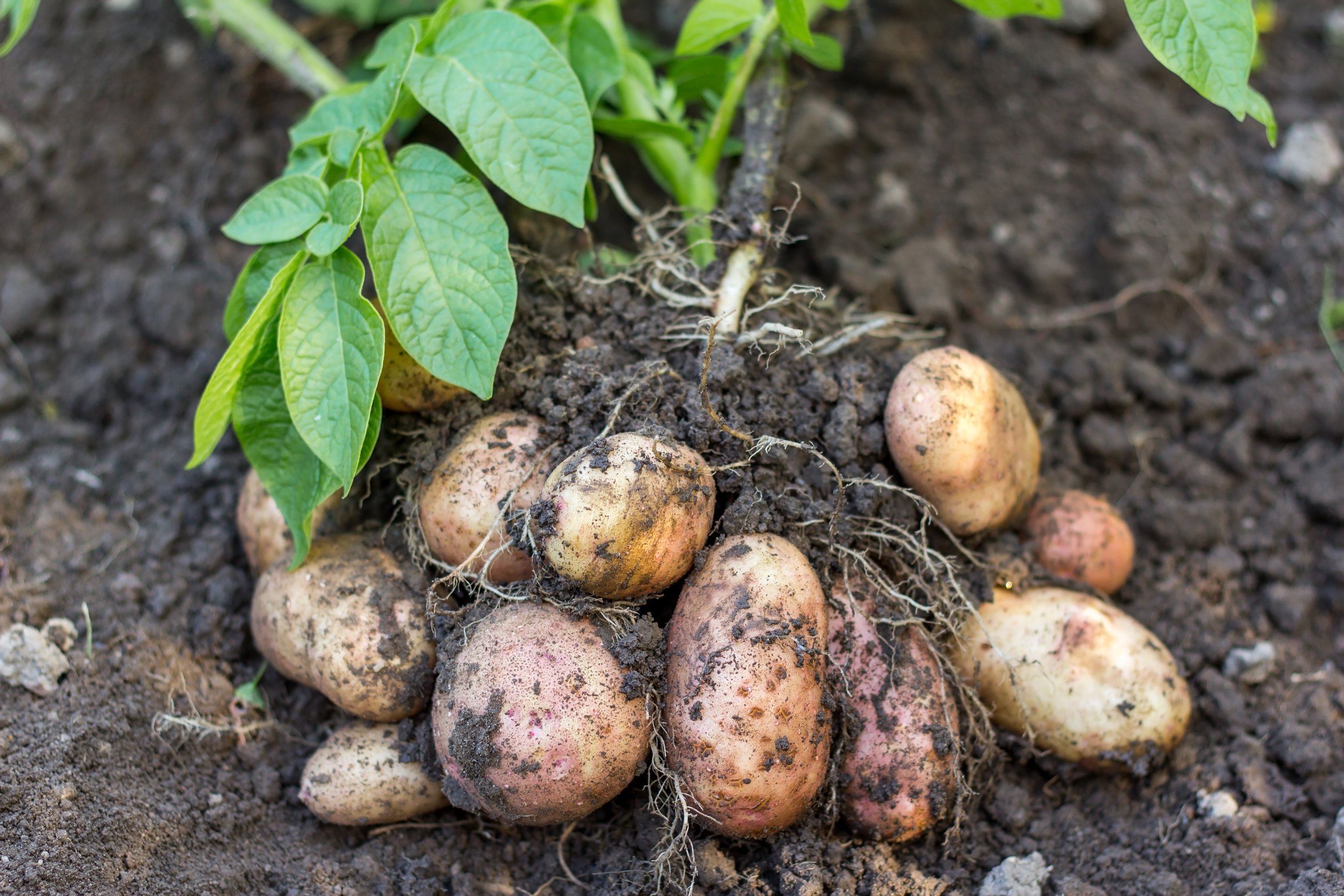Growing potatoes with children
If you’ve never grown potatoes with your children before, give it a try! The taste is far superior to shop-bought potatoes, you can grow them in containers if space is limited, and they’re a great vegetable for children to learn how to grow and harvest.
Potatoes are grown from ‘seed potatoes’, which are small tubers. It is possible to grow potatoes from a shop-bought spud, but buying a seed potato will guarantee that your seed is virus-free and will produce healthy plants. You can buy seed potatoes in garden centres or from online retailers. Bear in mind that one seed potato will produce many potatoes, and you will only need to plant 1-3 per container, depending on the size of your pot.
If you have somewhere you can grow them in the ground, your choice of variety is unlimited, but the best type to grow in containers are the first or second earlies (new potatoes), like ‘Charlotte’ or Jazzy’ as they’re harvested when they’re smaller. Main crop potatoes are planted around the same time as earlier, but left in the ground until the autumn, producing a much larger potato. Once you have your seed potatoes, you can start ‘chitting’ (sprouting) them in February or early March. This process is recommended for first or second early potatoes, as it gets the plant off to a head start and you’ll benefit from an earlier crop. Place your seed potatoes in egg boxes and position them in a cool, bright place. After a few days, you will start to see the ‘eyes’ sprout! Leave them to grow for about 4-6 weeks and when the eyes are about 3cm, the seeds are ready to be planted.
The ideal type of containers for growing potatoes are large pots, bags or tubs of at least 30 litre capacity. First, fill your containers to about a third of their depth with compost. A 30-litre container can hold one first or second early seed potato, placed in the centre, but if your tubs are larger you can add one or two more, evenly spaced apart. Handling your seed potatoes carefully so that the ‘eyes’ don’t get knocked off by accident, place them in the container and cover them with compost so that two-thirds of the container is now full.
Potato tubers need to be kept in the dark as exposure to light will turn them green and inedible, so as the plant emerges from the compost, keep adding more soil on top of the shoots as they appear, until the container is full to within 2.5cm of the top. Potato plants grown in containers need regular watering to ensure you get a good harvest, so do take care to not let them dry out. When the plants have finished flowering in late June/July, your potatoes are ready to harvest! You can either tip your container out onto the ground and harvest all of them at once or gently dig around beneath the soil and pull out a few at a time. Harvesting your potatoes is like digging for buried treasure, so encourage your children to gently dig around with their hands to see how many they can find!
Author: Alison Kenehan, RHS-qualified gardener and mother
If you’d like to receive regular gardening activities for children alongside nature craft activities, subscribe below to receive a monthly Mud & Bloom box! Each monthly Mud & Bloom box contains two lots of seeds or bulbs to plant and at least two nature craft activities.




